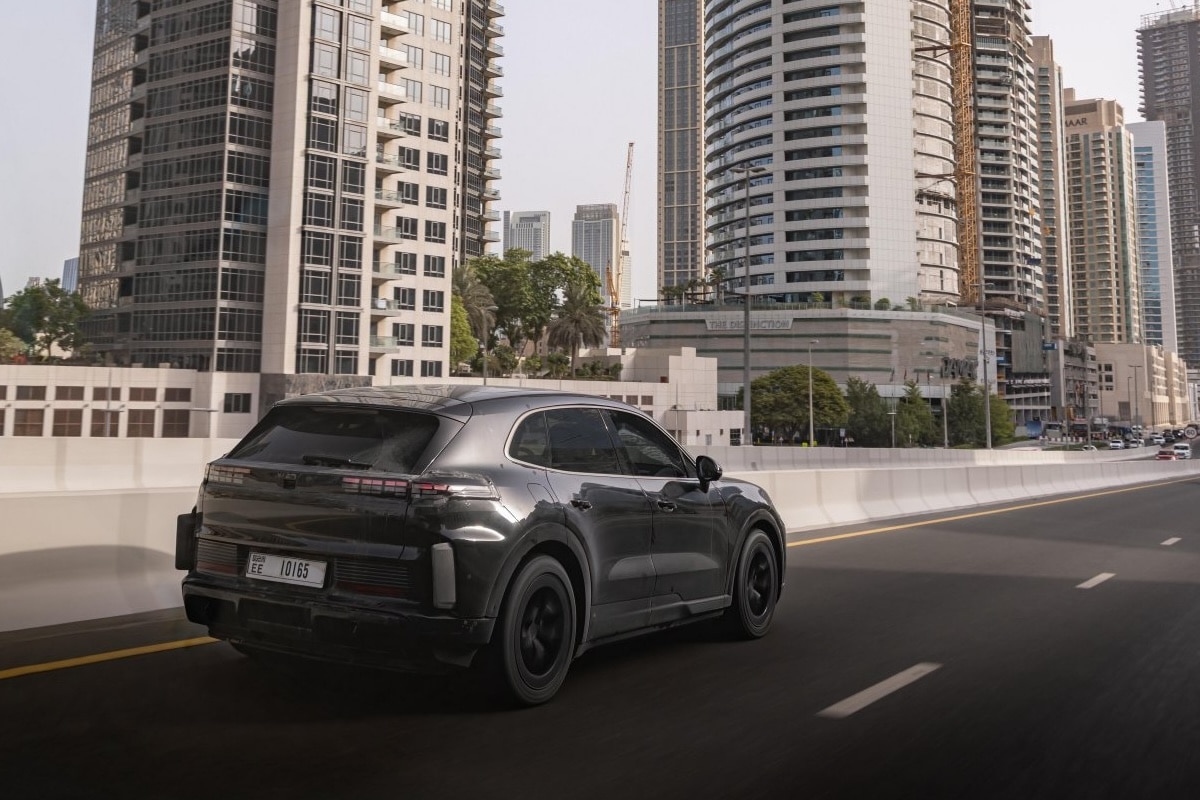Porsche Cayenne Electric: AI Has Enabled Huge Savings

The presentation of the first Cayenne 100% electric is approaching, and Porsche is revealing the behind-the-scenes of a development where virtual and real worlds blend.
We no longer develop a car in 2025 as we did one, two, or three decades ago. Technology and tools have evolved, and the search for profitability has as well. And this profitability hides everywhere.
Porsche does not hide this and communicates about the battery of digital tools that allow for shortening the process… while confirming on the ground that nothing replaces human experience.
You might be interestedin this article:
The Cayenne developed first on computer
For the first time in its history, Porsche skipped a key stage of its engineering protocol: no more multiplying unique prototypes constructed by hand. Where 120 development vehicles were typically counted, the Cayenne electric first existed in a virtual version. Engineers subjected it to comprehensive digital testing as early as the design phase, thus limiting costs, time, and material consumption.
A revolution made possible by the combination of perfectly digitized roads (from the Nürburgring circuit to daily routes), expertise acquired over decades at Weissach, and computing power that makes real-time simulation possible today.

Thanks to virtual reality, the first checks of components occurred when they only existed in digital form. Physical validations followed, on test benches. Porsche even went further by developing an unprecedented composite bench: four synchronous motors capable of reproducing on demand different asphalt surfaces, braking phases, or even tire slippage.
The Nürburgring… behind a screen
The most striking example remains the famous lap of the Nordschleife. Data from the digital prototype are directly injected into the test bench, which reproduces in real time every stress endured by the SUV. A mechanical hell that primarily allows for pushing the thermal management system, the cornerstone of any high-performance electric vehicle, to its limits.

No matter how precise, the machine cannot do everything. “Only test drivers can bring the final touch,” insists Sascha Niesen, head of vehicle testing. Human feeling remains essential to finely balance the chassis, driving aids, and energy management strategies.
In the city, on the highway, off-road, or on a track, the Cayenne electric has thus gone through all possible usage situations. With a clear objective: to ensure fast charging, regardless of previous driving conditions. This includes taking traffic jams into account to optimize energy consumption.
From burning deserts to the polar circle
Next, the SUV’s resistance in extreme conditions needs to be verified. Under 50 °C, in the Gulf or Death Valley, the air conditioning and thermal management of the battery are put to the test. Conversely, in Scandinavia, Porsche tested cold starts, the behavior of electronic aids, and road handling on icy surfaces at -35 °C. In both cases, the mantra is the same: charging must remain fast and reliable. Few competitors dare to be so demanding.

To these extreme tests, endurance runs are added, simulating a vehicle’s complete life cycle in just a few months, with over 150,000 km covered under real conditions. Between crash tests, test benches, and simulations, Porsche estimates it has gained 20% on development time compared to a classical strategy.
The electric Cayenne is expected by the end of the year and will join the catalog alongside hybrid and thermal versions. A strategic model for Porsche, which must demonstrate its ability to electrify one of its best-sellers while maintaining its standards in performance and reliability.
ALSO READ: 496 km/h: the BYD Yangwang U9 Xtreme dethrones Bugatti (video)
This page is translated from the original post "Porsche Cayenne électrique : l’IA a permis d’énormes économies" in French.
We also suggestthese articles:
Also read





